#and I'm very very very tired
Explore tagged Tumblr posts
Text
hmm
#I've been going through my old furuba headcanon/meta tags and man do I miss it#I also want to acknowledge some asks I've gotten in the past *checks notes* couple years#I can only do one thing at a time like a sim#and the one thing I've been doing has been going back to grad school for some reason#anyway it's my last semester#and I'm very very very tired#and really missing writing things that aren't my thesis#things like fanfiction#things like my incomplete fanfictions#anyway maybe I'll see whoever's still hanging around here in a few months#wish me luck in the meantime#it's week 2 of the semester and I already cannot stress how tired I am
10 notes
·
View notes
Text

"Breach of Dawn"
First full painting of the new year, after a very long week. 💔
Prints of Lugia and Ho-oh available in my store. ✨️💛✨️
#pokemon#lugia#fanart#pokemon art#pokemon fanart#pkmn#pkmnart#legendary pokemon#digital art#small artist#fog#I'm very tired#dragon#kinda#like a dragon whale#goodest boi
13K notes
·
View notes
Text
Also increasingly aware that a LOT of people "manage" getting through the 40+ hour work week by sleeping less than is healthy and relying on stimulants like coffee and energy drinks to keep them going.
For people who are unwilling or unable to do this...work really does just dominate your life. Like we really should not have to rely on unhealthy practices just to have a social life or keep on top of housework or whatever.
I know I post about this a lot but I'm so TIRED all the time and it's just so depressing that this is how we're expected to spend the one life we have.
#i have to get at least 8 hours of sleep a night to even barely function#with sleep#getting ready for work#commute#cooking#and errands#I typically have maybe 2-3 hours to actually do what i want in a day#and I'm usually too tired to actually do the things i want to do#and that's with a very short commute#if i actually had a long commute I'd basically do nothing but work#i see my friends like once every few weeks or months#because we're all so fucking busy with work and have such little time for socialising#and none of us even have kids or anything!!
27K notes
·
View notes
Text
You don't wish your disability was worse or more visible, you wish your disability was taken seriously. Please stop confusing the two, I guarantee you would not get the support you need JUST by being more severe or more visible. Please listen to visibly disabled people when we tell you it isn't better on our side
#m/cc#mine#I tried extremely hard to word this nicely because I KNOW people don't mean bad and often even know there are unique challenges#and believe me I know the challenges of invisible disability too!!#I have invisible disabilities!#but as someone who has also been at least visibly 'off' since they were 10 I am SO SICK of invisible disabilities being hailed as like#a unique extra oppression that us lucky visibly disabled people don't have to deal with#there are challenges to invisible disabilities that visibly disabled people DON'T have to deal with!#but you need to understand that *the reverse is also true*#there are MASSIVE benefits to being able to lie about your disability for example#or not dealing with the overt ableism that comes with your disability being obvious to everyone#*I do not have the option to pretend I'm not disabled.* that is never an option I have#I walk weirdly. I use a mobility aid now. my speech and face are 'off.' I lean to one side#for a long time I wore sunglasses 24/7 and often didn't make sense. I sometimes can't speak or won't react to others#for the most part people will always know that at the very least something is wrong with me#and more obviously I have people telling me they'll pray for me; telling me I can't do things I'm already in the process of doing;#wanting to shake my hand to tell me I'm an inspiration for not killing myself; giving me dirty looks for existing in public#and yes. I'm aware that this is very much an in-community issue. I know the average abled person doesn't know invisible disabilities exist#that's why there's so much awareness happening for it#but as a visibly disabled person I get SO TIRED of constantly hearing 'I wish my disability was visible :'('#it's just 'I wish I had your disability!' but from other disabled people
5K notes
·
View notes
Text
the fact that you can see the exact moment tears appear in his eyes

#dragon age#dragon age the veilguard#solas#solavellan#datv spoilers#veilguard spoilers#i'm not okay#look i'm not very good with words#but like#this is his last attempt to turn lavellan down but he sounds so tired and almost resigned here#like he knows the answer already#but still can't believe that she wants to leave the world behind just to be with him#but he also does want to be with her. so much. and now he's finally free to do so#so maybe that's not even an attempt but just a warning#there's hope in those eyes too#behind his warning is a question “are you sure that's what you want?”#and the answer is yes. because there's no fate but the love they share
2K notes
·
View notes
Text
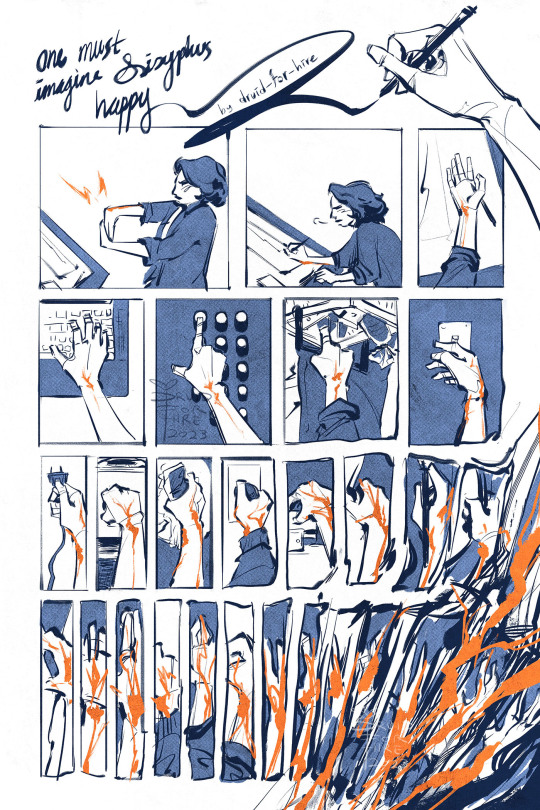
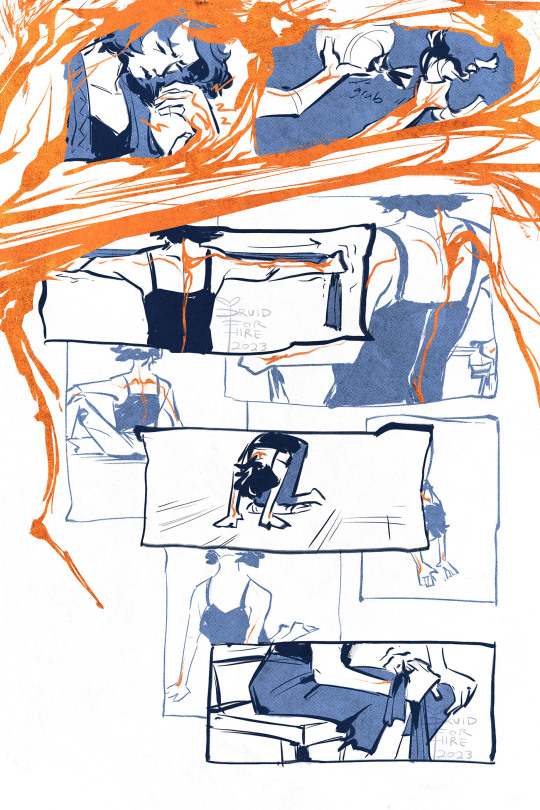
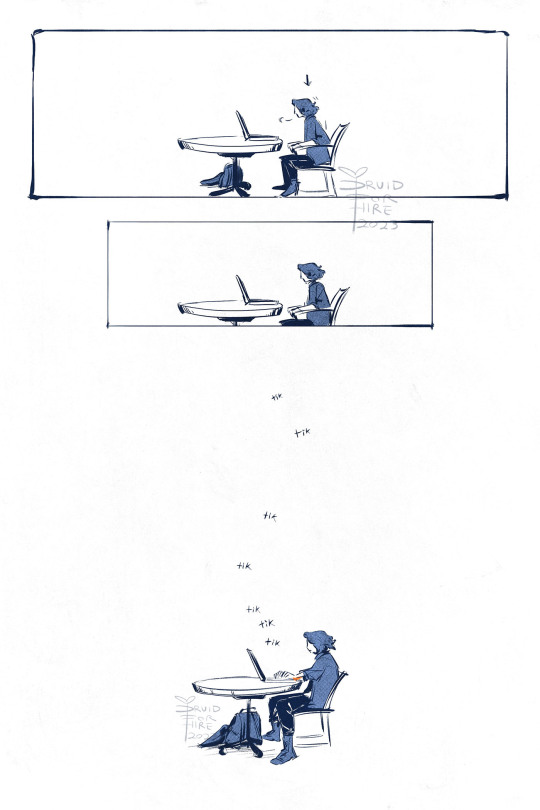
[images ID: three images of a comic titled "one must imagine sisyphus happy" by druid-for-hire. it is a visual narrative beginning with someone with wrist pain (depicted by bright orange nerves) working at a drafting table. the reader is shown the same wrist as the person uses it for many everyday tasks such as carrying a grocery basket, pushing elevator buttons, typing, and doing dishes, until the pain dissolves all the panels into chaos. the person then performs several physical therapy exercises until the pain subsides. they sit back down at a desk with their laptop, sigh, and begin typing. a small spark of pain reappears. end id]
a fun little piece i made during the semester and submitted into our school comic anthology! (which you can buy at the Static Fish table at MoCCAFest in NYC ;] ). it's about artists and injury
#comic art#comics#original comic#chronic pain#carpal tunnel#tendonitis#my art#original#edit: what a delightful surprise to see this take off#this was made for class on very low fuel and very few thoughts and late at night and exhausted#the prompt was just a wordless narrative essay. three pages. and i had nothing and no ideas#and my head hurt and i was too tired to think about doing any of the like. research and mind mapping and ideating i'd do otherwise#but my arm hurt#so i decided to do a thing about arm hurty#i'm surprised to see so many people finding it resonating with them#but then again i shouldn't be. the universal lies in the specific#i should make more things about smaller stuff
12K notes
·
View notes
Text
I realized that I could easily do the same to DAI's script, and I did that, but then I immediately created my magnum opus:
A Text File of Everything Solas Says In Inquisition and Veilguard, The Ultimate Fanfic Resource For Writing Solas' Voice*
and I fell on the floor because it made me happy.
*edited to correct a minor mishap
#did you know Solas says 36000 words#Dragon Age#Solas#Inquisiton spelunking#Veilguard spelunking#I cannot wait to look through it more#I wonder if there's a difference between him speaking in Dread Wolf I'm The Bad Guy mode#that's noticeable just in text#he's sooooo cute#and some of these are very rare lines#Solas says 2345 lines in Inquisition#and 814 lines in Veilguard#I didn't bother to keep in the “Dread Wolf whining noises” sound effect lines sorry about that#and I'll upload the DAI version later I made a mistake on it and I'm tired for now
3K notes
·
View notes
Text
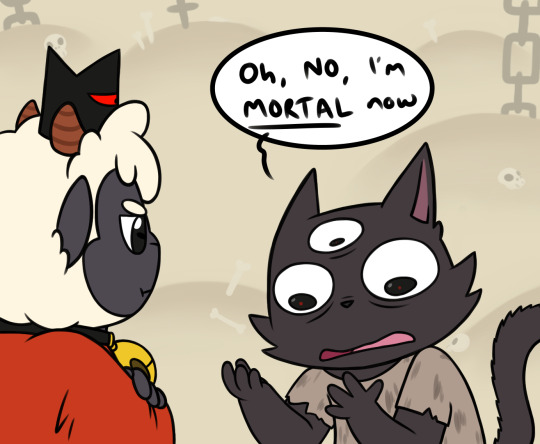
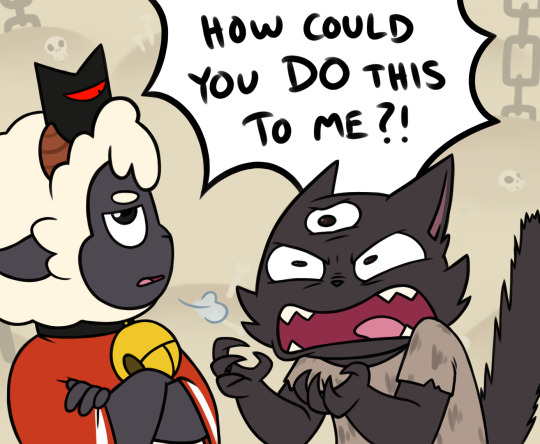
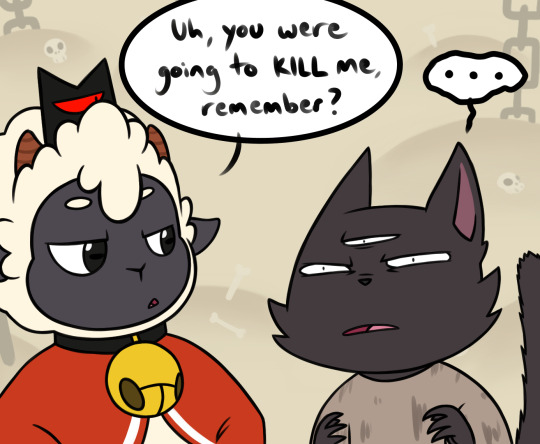
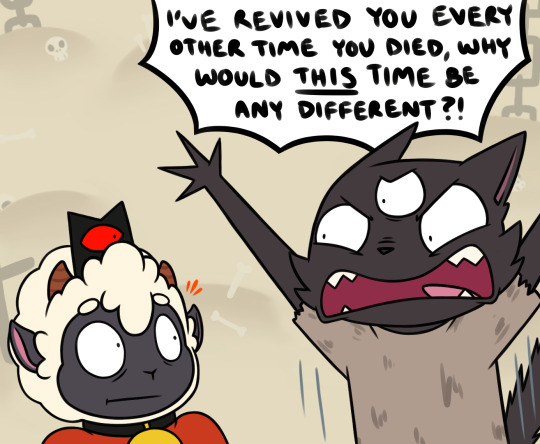
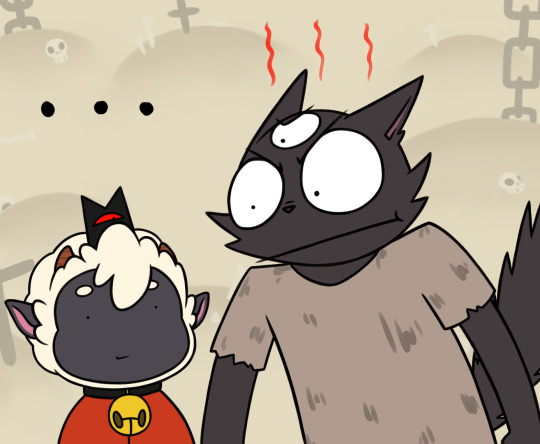
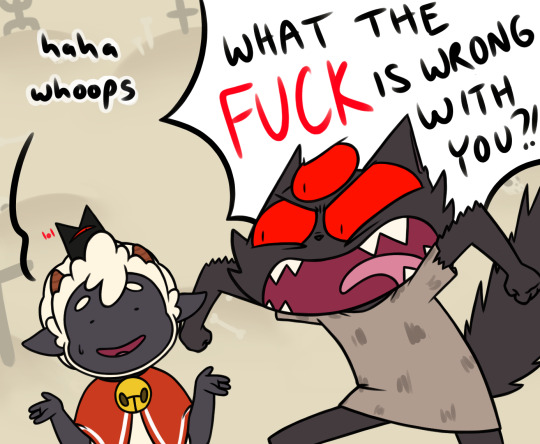
Call this the Whoopsie AU (it's barely an AU)
I mean. Narinder never explicitly SAID the Lamb would stay dead... :3c He probably should have been more specific. >:3c
Part Two:
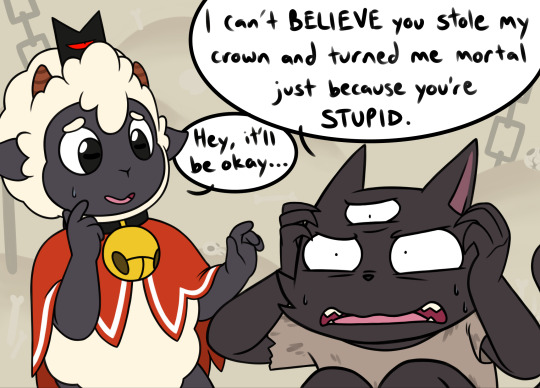
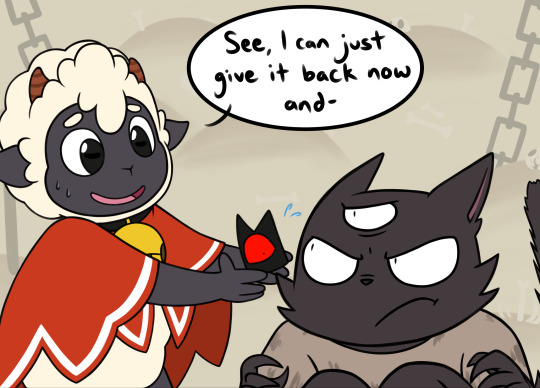
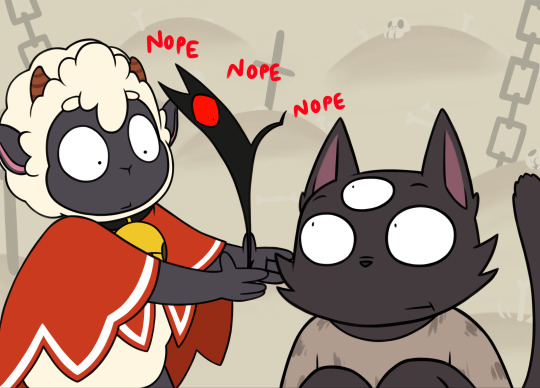
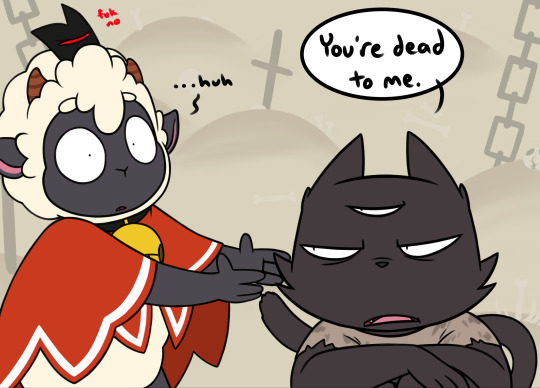
Well. The Lamb tried, but...sorry, Nari, the crown hates you now. Shouldn't have been so quick to lend it out, I guess. :D
Aaaand Part Three:
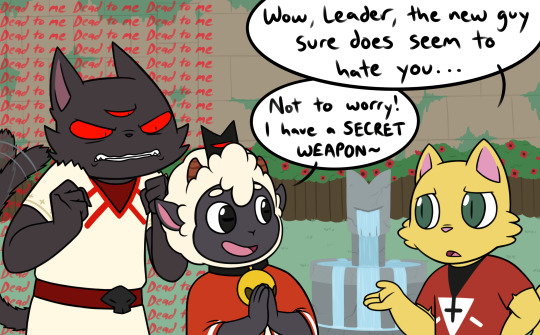
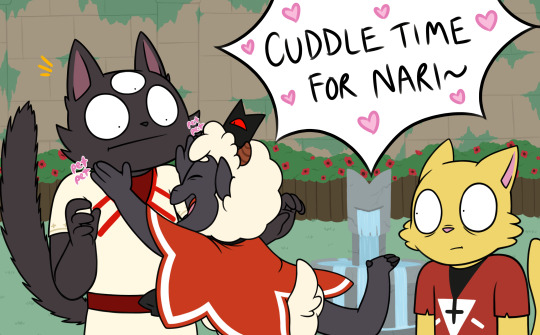
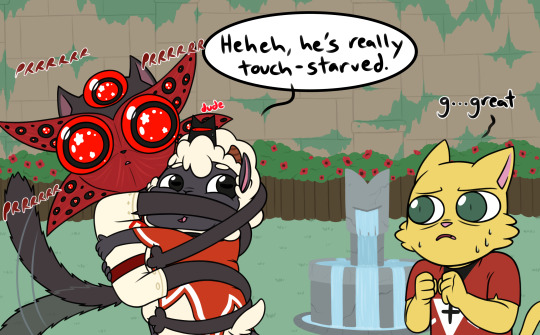
'Isn't he just adorable?' -The Lamb, probably, while their followers smile and nod and internally scream at the brand new hellcat they now have to share living space with...
Anyway, nothing says 'Dead To Me' like following a person around to loudly remind them of how dead they are to you. Right? Right. Narinder's got this all figured out. <:]
#fanart#comics#cult of the lamb#cotl#narilamb#cotl lamb#cotl narinder#cotl yellow cat#this is my headcanon and i'm sticking to it#the lamb is a goofy stabby-babby goober and narinder is just a grumpy asshole who constantly velcroes onto them for hella snuggles#look - if you've been trapped in the afterlife void for over a thousand years - you are GONNA want a fuckton of snuggles#that's just science#the scribble comic i did with narinder and the yellow cat can technically work as part four i guess#only instead of the lamb Going Gremlin at the attempt to steal their other followers' devotion#they just comin' at him for Rad Cuddles OuO#someday i will draw these two with the proper height difference i imagine them having#today is not that day#today is also not the day i pin down exactly how long i want narinder's tail to be#(but i want it to be Very Long - just because)#there are inconsistencies here and there and probably some mistakes but i have been working on these for a week and i am So Tired guys#EDIT: haha yeah i forgot to color in narinder's fukken ears again#fuk :)#EDIT 2: i fixed it but it's probably too late at this point lmao#EDIT 3: THE LAMB'S FUKKEN HORNS JFC#i am not editing this thing anymore cuz i need sleep and the mistakes are already out there *dies of artist mortification*
6K notes
·
View notes
Text
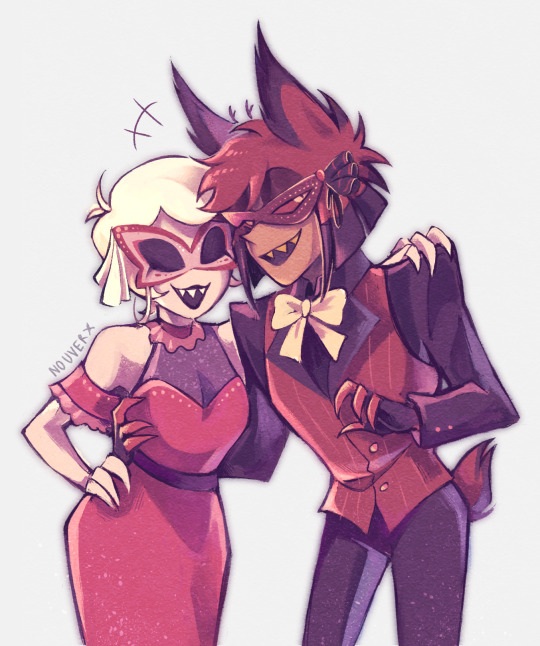

Pov the cannibal overlords are judging your outfit (or discussing how they're going to cook you tonight, your choice 👀)
Based on very cool outfits for them I saw on twitter! Here's Alastor and here's Rosie
#hazbin hotel#hazbin hotel fanart#hazbin alastor#hazbin rosie#alastor#radiorose#digital art#my art#clip studio paint#YES I'm using clip studio paint for the first time in 3 years damn I missed that bitch#Welp that was tiring but I'm very happy with it#ALSO YES I KNOW ALASTOR'S HAND IS A BIT TOO HIGH I'M SORRY#by the time I noticed it looked weird I had already started painting and all of my layers were merged lmao#oopsie#please just ignore that detail 💃#or maybe this one can be seen as not-so-platonic radiorose?? lmao
8K notes
·
View notes
Text
i vote that next year instead of reading Dracula we do a Jeeves & Wooster Book Club. those two never got the rabid tumblr shipping fandom they deserved (disqualified for the sheer technicality of being published a century too soon). we must correct this injustice
#jeeves and wooster#i want to watch tumblr go rabid i want to watch ao3 overflow with jeeves/wooster fanfiction#yes obviously the fandom EXISTS but it's a cozy little neighborhood#a handful of talented artists and writers doing their best to keep their charming little village going#but i'm tired of cozy i want this fandom TRENDING#I WANT TO SEE THIS ON MY DASHBOARD PEOPLE#i swear to you if they made a shiny new tv series tumblr would absolutely obsess over these characters. good omens levels of obsession#it's just such a great dynamic! the good-natured overly-trusting bumbling idiot in constant need of rescuing!#the stoic all-knowing genius who quietly masterminds mayhem in order to protect this one moron he's devoted himself to for some reason#jeeves as a morosexual is just such a beautiful interpretation of the original text#wooster as a happy-go-lucky himbo who stumbles his way into a relationship with a protective caring and supremely competent mastermind#the angst and social complexities of a same-sex cross-class relationship in turn-of-the century london!#oh AND half the stories are about jeeves helping wooster get out of engagements/desperately avoid marriage#two men who live together constantly scheming to maintain their bachelorhood. this is quite literally the main plot point#the gay subtext is there! the gay subtext is there and very ripe for picking!!!#this thing is LOCKED AND LOADED we can pounce literally any time
11K notes
·
View notes
Text
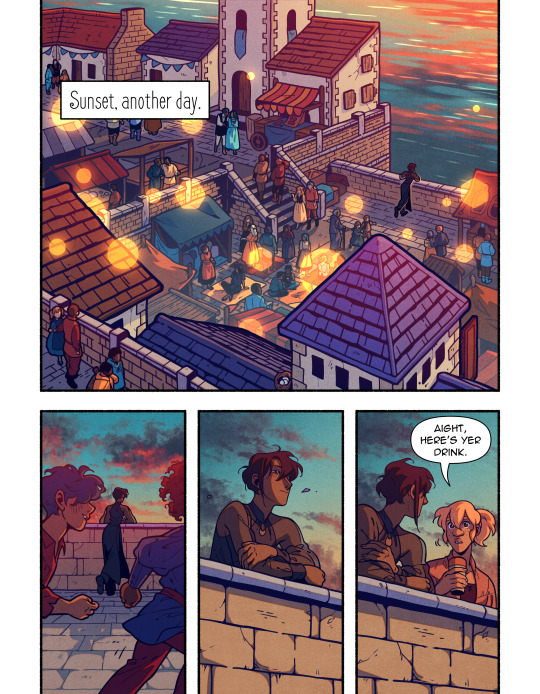
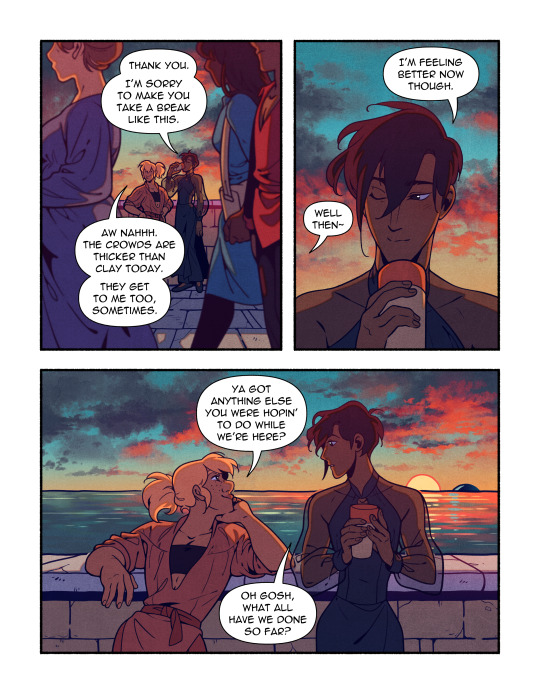
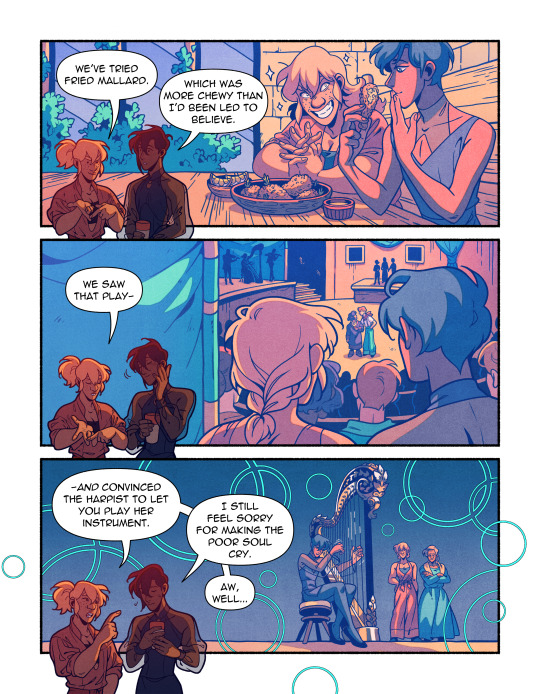
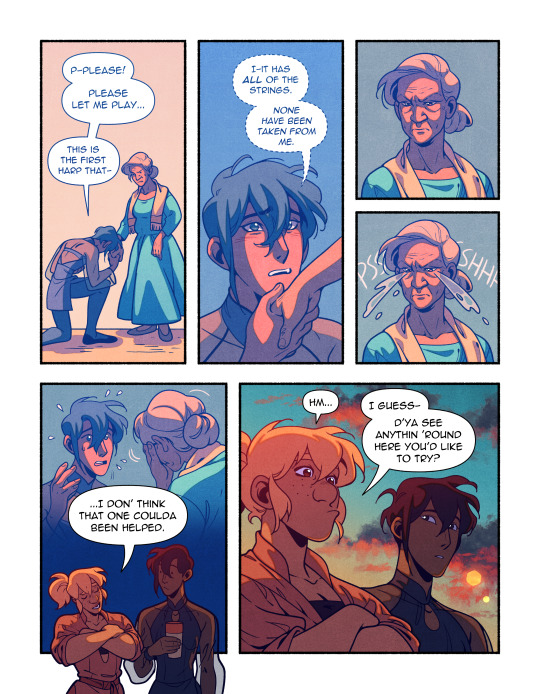
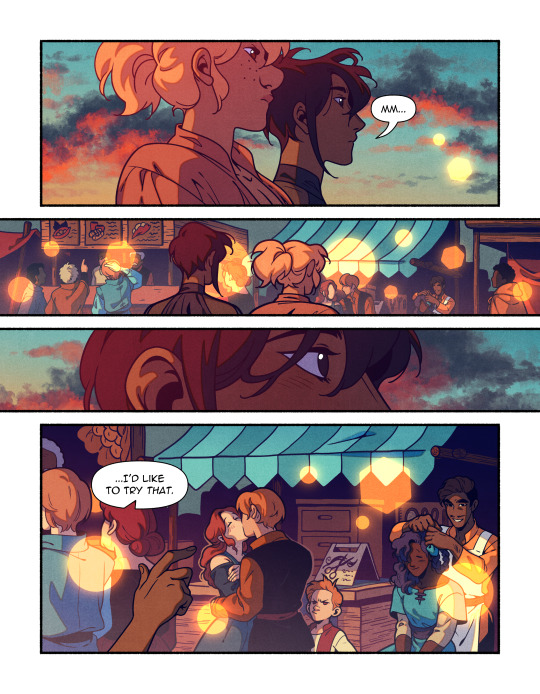
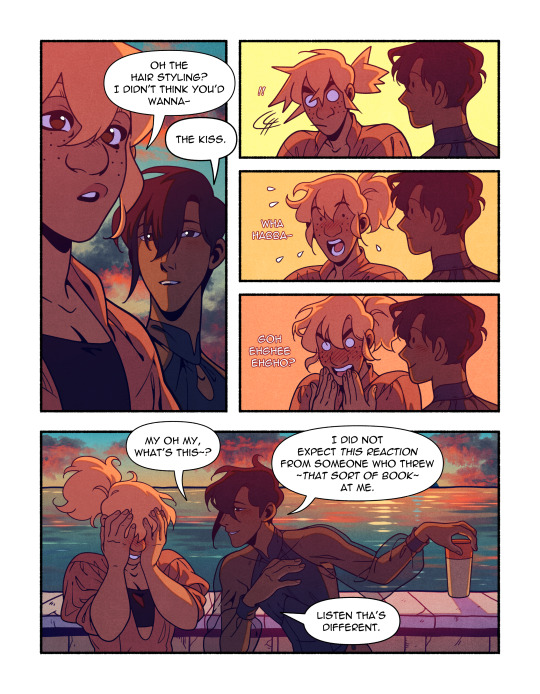
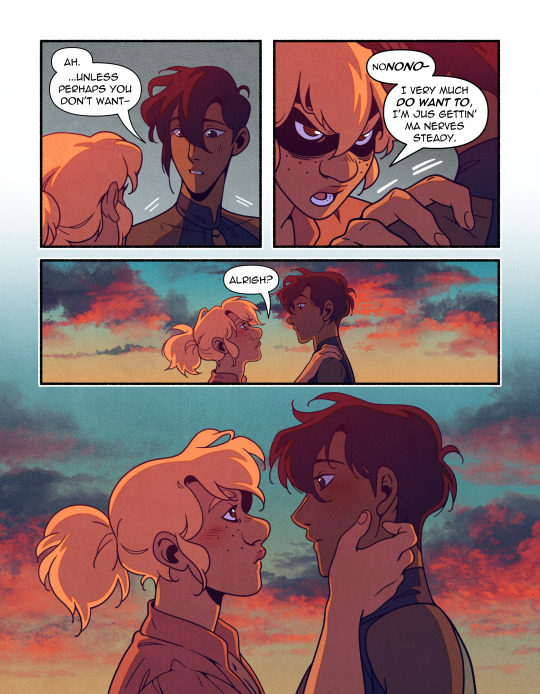
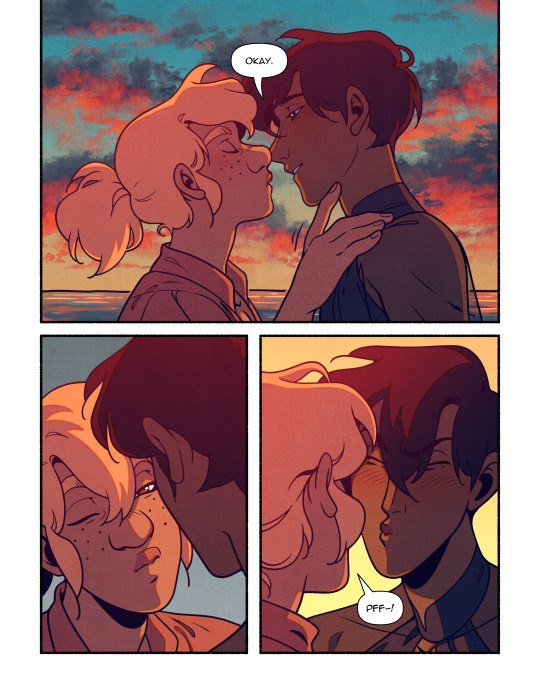

posting here mostly for posterity, partly because i just want to have it on my tumblr. still proud of the color palette for this one
newcomers, you can read the full story right here.
#the touch of sunlight#comic#portfolio#sandflakedrew#i'm . very tired atm so just posting as is. just to have it up#long post
2K notes
·
View notes
Text








bunch of portraits
#my art#jujutsu kaisen#jjk#jjk fanart#jujutsu kaisen fanart#yuji itadori#ryomen sukuna#megumi fushiguro#gojo satoru#nanami kento#choso kamo#nobara kugisaki#yuta okkotsu#fanart#crying im so tired....#busts aren't hard on their own but 8 of them ???#i should have stuck at 6 if i knew what was good fr me#but lucky fr choso n yuuta enjoyers i dont know whats good fr me and tacked on the extra 2 last minute#i did a bust piece waaay back in 2020 early jjk days and it was this crowd minus choso/yuuta so i wanted to like. do a kind of redraw#im happy choso n yuuta made the cut tho they r fun they look as tired as i feel#i've been having a lot of fun w the more semirealistic skin render so i wanted to stretch those muscles a bit more#took the better part of 3 days but u know i'm pretty happy w these i dont think i have a hard least favourite#fun game guess my favourite characters based on how i draw them it is Glaringly obvious 2 me#ik i said i dont have a least favourite but i certainly have A Favourite#uhhhh misc notes i tried rly hard to make sukuna's face look like yuuji's and only rly change the expression#i think i was successful??? i hope?????? like i didnt want to make him look like his own person as bad as that sounds#he is Wearing Yuuji that is Yuuji's Face#also i rly . wish there were more women . but as much as i like maki as a character i fr some reason don't find drawing her very fun ?#so nobara out here pulling her weight fr the girls my goat my queen <333
2K notes
·
View notes
Text


hugs I meant to draw for July 29th ...... but we're always celebrating that here
#I am on vacation rn so I'm not too pressed about it#scribbles#gravity falls#ford pines#fiddleford mcgucket#I will add alt text in the morning. Just very tired lol
1K notes
·
View notes
Text
Fantasy Guide to Interiors
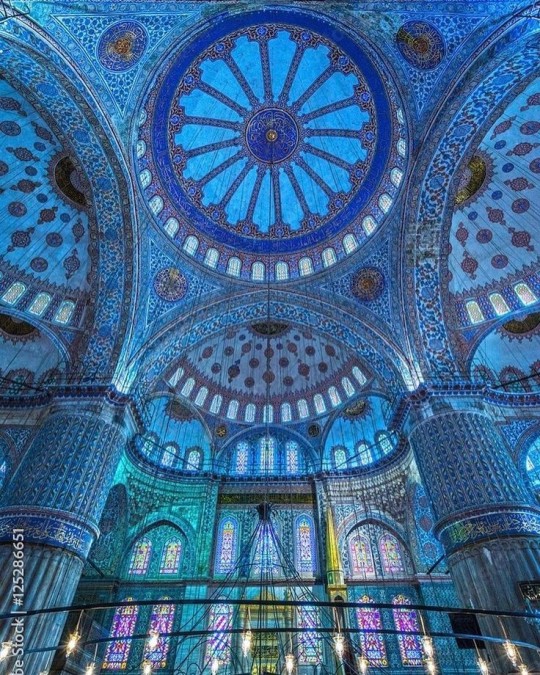
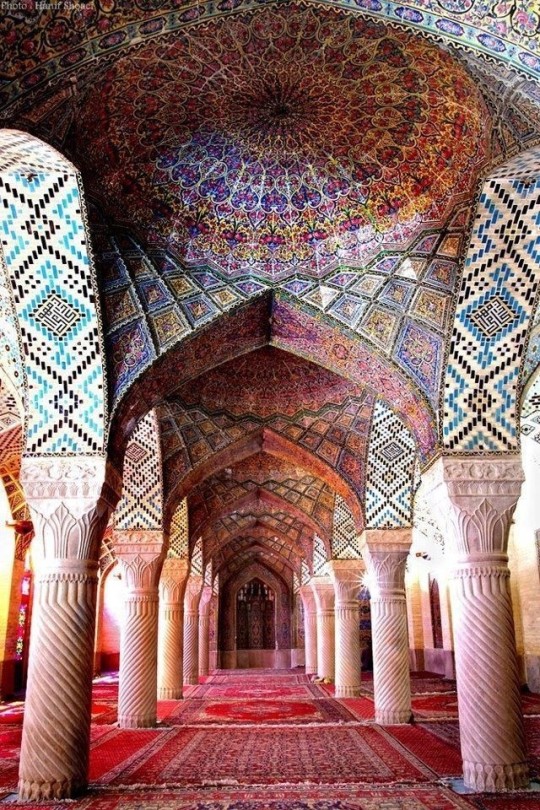
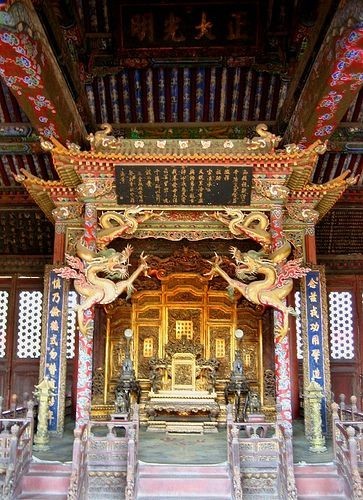
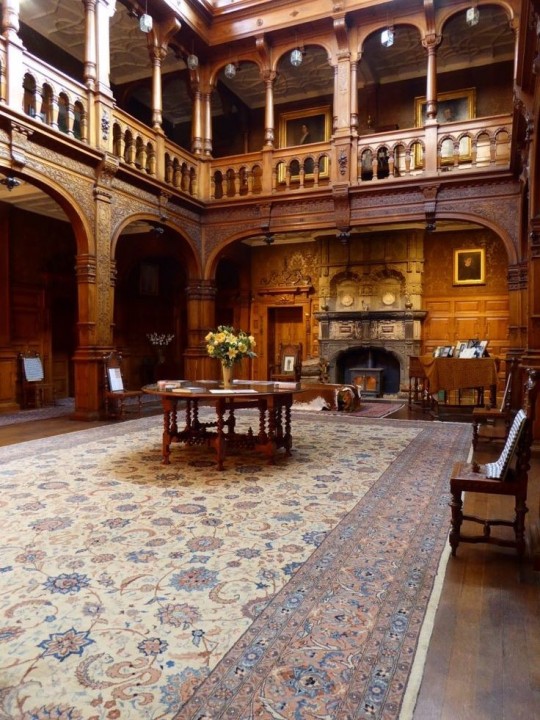
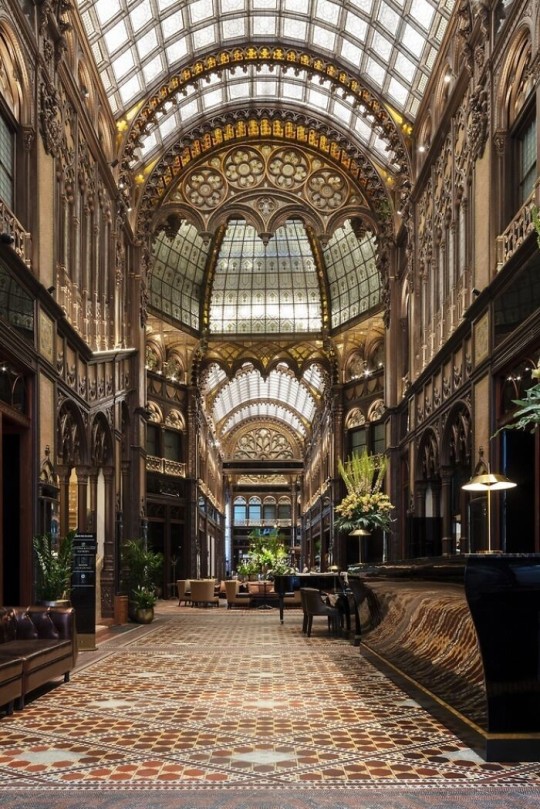
As a followup to the very popular post on architecture, I decided to add onto it by exploring the interior of each movement and the different design techniques and tastes of each era. This post at be helpful for historical fiction, fantasy or just a long read when you're bored.
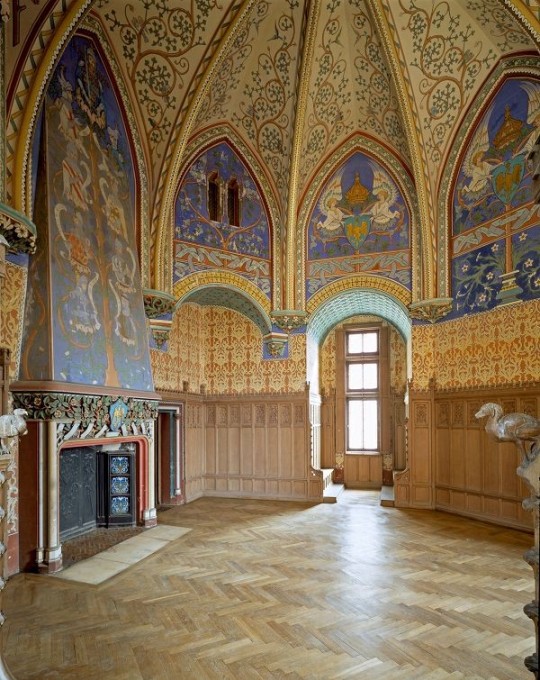
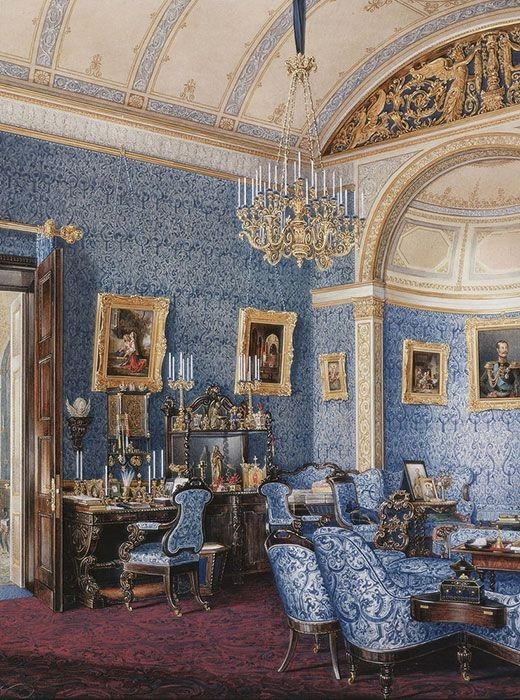
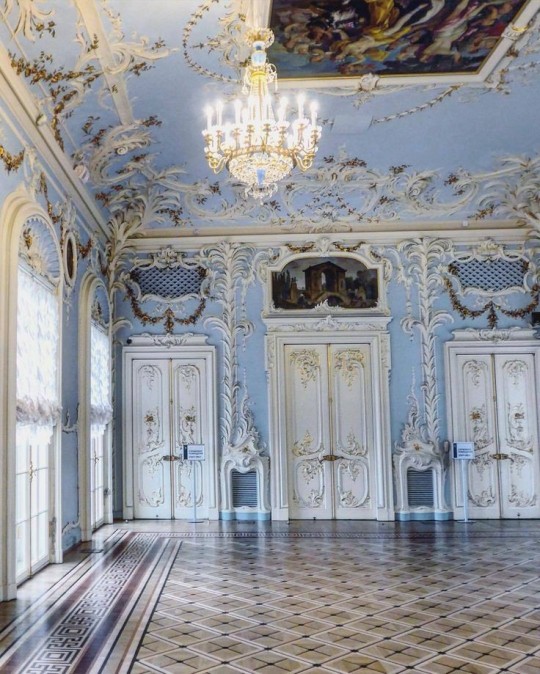
Interior Design Terms
Reeding and fluting: Fluting is a technique that consists a continuous pattern of concave grooves in a flat surface across a surface. Reeding is it's opposite.
Embossing: stamping, carving or moulding a symbol to make it stand out on a surface.
Paneling: Panels of carved wood or fabric a fixed to a wall in a continuous pattern.
Gilding: the use of gold to highlight features.
Glazed Tile: Ceramic or porcelain tiles coated with liquid coloured glass or enamel.
Column: A column is a pillar of stone or wood built to support a ceiling. We will see more of columns later on.
Bay Window: The Bay Window is a window projecting outward from a building.
Frescos: A design element of painting images upon wet plaster.
Mosaic: Mosaics are a design element that involves using pieces of coloured glass and fitted them together upon the floor or wall to form images.
Mouldings: ornate strips of carved wood along the top of a wall.
Wainscoting: paneling along the lower portion of a wall.
Chinoiserie: A European take on East Asian art. Usually seen in wallpaper.
Clerestory: A series of eye-level windows.
Sconces: A light fixture supported on a wall.
Niche: A sunken area within a wall.
Monochromatic: Focusing on a single colour within a scheme.
Ceiling rose: A moulding fashioned on the ceiling in the shape of a rose usually supporting a light fixture.
Baluster: the vertical bars of a railing.
Façade: front portion of a building
Lintel: Top of a door or window.
Portico: a covered structure over a door supported by columns
Eaves: the part of the roof overhanging from the building
Skirting: border around lower length of a wall
Ancient Greece
Houses were made of either sun-dried clay bricks or stone which were painted when they dried. Ground floors were decorated with coloured stones and tiles called Mosaics. Upper level floors were made from wood. Homes were furnished with tapestries and furniture, and in grand homes statues and grand altars would be found. Furniture was very skillfully crafted in Ancient Greece, much attention was paid to the carving and decoration of such things. Of course, Ancient Greece is ancient so I won't be going through all the movements but I will talk a little about columns.
Doric: Doric is the oldest of the orders and some argue it is the simplest. The columns of this style are set close together, without bases and carved with concave curves called flutes. The capitals (the top of the column) are plain often built with a curve at the base called an echinus and are topped by a square at the apex called an abacus. The entablature is marked by frieze of vertical channels/triglyphs. In between the channels would be detail of carved marble. The Parthenon in Athens is your best example of Doric architecture.
Ionic: The Ionic style was used for smaller buildings and the interiors. The columns had twin volutes, scroll-like designs on its capital. Between these scrolls, there was a carved curve known as an egg and in this style the entablature is much narrower and the frieze is thick with carvings. The example of Ionic Architecture is the Temple to Athena Nike at the Athens Acropolis.
Corinthian: The Corinthian style has some similarities with the Ionic order, the bases, entablature and columns almost the same but the capital is more ornate its base, column, and entablature, but its capital is far more ornate, commonly carved with depictions of acanthus leaves. The style was more slender than the others on this list, used less for bearing weight but more for decoration. Corinthian style can be found along the top levels of the Colosseum in Rome.
Tuscan: The Tuscan order shares much with the Doric order, but the columns are un-fluted and smooth. The entablature is far simpler, formed without triglyphs or guttae. The columns are capped with round capitals.
Composite: This style is mixed. It features the volutes of the Ionic order and the capitals of the Corinthian order. The volutes are larger in these columns and often more ornate. The column's capital is rather plain. for the capital, with no consistent differences to that above or below the capital.
Ancient Rome
Rome is well known for its outward architectural styles. However the Romans did know how to add that rizz to the interior. Ceilings were either vaulted or made from exploded beams that could be painted. The Romans were big into design. Moasics were a common interior sight, the use of little pieces of coloured glass or stone to create a larger image. Frescoes were used to add colour to the home, depicting mythical figures and beasts and also different textures such as stonework or brick. The Romans loved their furniture. Dining tables were low and the Romans ate on couches. Weaving was a popular pastime so there would be tapestries and wall hangings in the house. Rich households could even afford to import fine rugs from across the Empire. Glass was also a feature in Roman interior but windows were usually not paned as large panes were hard to make. Doors were usually treated with panels that were carved or in lain with bronze.
Ancient Egypt
Egypt was one of the first great civilisations, known for its immense and grand structures. Wealthy Egyptians had grand homes. The walls were painted or plastered usually with bright colours and hues. The Egyptians are cool because they mapped out their buildings in such a way to adhere to astrological movements meaning on special days if the calendar the temple or monuments were in the right place always. The columns of Egyptian where thicker, more bulbous and often had capitals shaped like bundles of papyrus reeds. Woven mats and tapestries were popular decor. Motifs from the river such as palms, papyrus and reeds were popular symbols used.
Ancient Africa
African Architecture is a very mixed bag and more structurally different and impressive than Hollywood would have you believe. Far beyond the common depictions of primitive buildings, the African nations were among the giants of their time in architecture, no style quite the same as the last but just as breathtaking.
Rwandan Architecture: The Rwandans commonly built of hardened clay with thatched roofs of dried grass or reeds. Mats of woven reeds carpeted the floors of royal abodes. These residences folded about a large public area known as a karubanda and were often so large that they became almost like a maze, connecting different chambers/huts of all kinds of uses be they residential or for other purposes.
Ashanti Architecture: The Ashanti style can be found in present day Ghana. The style incorporates walls of plaster formed of mud and designed with bright paint and buildings with a courtyard at the heart, not unlike another examples on this post. The Ashanti also formed their buildings of the favourite method of wattle and daub.
Nubian Architecture: Nubia, in modern day Ethiopia, was home to the Nubians who were one of the world's most impressive architects at the beginning of the architecture world and probably would be more talked about if it weren't for the Egyptians building monuments only up the road. The Nubians were famous for building the speos, tall tower-like spires carved of stone. The Nubians used a variety of materials and skills to build, for example wattle and daub and mudbrick. The Kingdom of Kush, the people who took over the Nubian Empire was a fan of Egyptian works even if they didn't like them very much. The Kushites began building pyramid-like structures such at the sight of Gebel Barkal
Japanese Interiors
Japenese interior design rests upon 7 principles. Kanso (簡素)- Simplicity, Fukinsei (不均整)- Asymmetry, Shizen (自然)- Natural, Shibumi (渋味) – Simple beauty, Yugen (幽玄)- subtle grace, Datsuzoku (脱俗) – freedom from habitual behaviour, Seijaku (静寂)- tranquillity.
Common features of Japanese Interior Design:
Shoji walls: these are the screens you think of when you think of the traditional Japanese homes. They are made of wooden frames, rice paper and used to partition
Tatami: Tatami mats are used within Japanese households to blanket the floors. They were made of rice straw and rush straw, laid down to cushion the floor.
Genkan: The Genkan was a sunken space between the front door and the rest of the house. This area is meant to separate the home from the outside and is where shoes are discarded before entering.
Japanese furniture: often lowest, close to the ground. These include tables and chairs but often tanked are replaced by zabuton, large cushions. Furniture is usually carved of wood in a minimalist design.
Nature: As both the Shinto and Buddhist beliefs are great influences upon architecture, there is a strong presence of nature with the architecture. Wood is used for this reason and natural light is prevalent with in the home. The orientation is meant to reflect the best view of the world.
Islamic World Interior
The Islamic world has one of the most beautiful and impressive interior design styles across the world. Colour and detail are absolute staples in the movement. Windows are usually not paned with glass but covered in ornate lattices known as jali. The jali give ventilation, light and privacy to the home. Islamic Interiors are ornate and colourful, using coloured ceramic tiles. The upper parts of walls and ceilings are usually flat decorated with arabesques (foliate ornamentation), while the lower wall areas were usually tiled. Features such as honeycombed ceilings, horseshoe arches, stalactite-fringed arches and stalactite vaults (Muqarnas) are prevalent among many famous Islamic buildings such as the Alhambra and the Blue Mosque.
Byzantine (330/395–1453 A. D)
The Byzantine Empire or Eastern Roman Empire was where eat met west, leading to a melting pot of different interior designs based on early Christian styles and Persian influences. Mosaics are probably what you think of when you think of the Byzantine Empire. Ivory was also a popular feature in the Interiors, with carved ivory or the use of it in inlay. The use of gold as a decorative feature usually by way of repoussé (decorating metals by hammering in the design from the backside of the metal). Fabrics from Persia, heavily embroidered and intricately woven along with silks from afar a field as China, would also be used to upholster furniture or be used as wall hangings. The Byzantines favoured natural light, usually from the use of copolas.
Indian Interiors
India is of course, the font of all intricate designs. India's history is sectioned into many eras but we will focus on a few to give you an idea of prevalent techniques and tastes.
The Gupta Empire (320 – 650 CE): The Gupta era was a time of stone carving. As impressive as the outside of these buildings are, the Interiors are just as amazing. Gupta era buildings featured many details such as ogee (circular or horseshoe arch), gavaksha/chandrashala (the motif centred these arches), ashlar masonry (built of squared stone blocks) with ceilings of plain, flat slabs of stone.
Delhi Sultanate (1206–1526): Another period of beautifully carved stone. The Delhi sultanate had influence from the Islamic world, with heavy uses of mosaics, brackets, intricate mouldings, columns and and hypostyle halls.
Mughal Empire (1526–1857): Stonework was also important on the Mughal Empire. Intricately carved stonework was seen in the pillars, low relief panels depicting nature images and jalis (marble screens). Stonework was also decorated in a stye known as pietra dura/parchin kari with inscriptions and geometric designs using colored stones to create images. Tilework was also popular during this period. Moasic tiles were cut and fitted together to create larger patters while cuerda seca tiles were coloured tiles outlined with black.
Chinese Interiors
Common features of Chinese Interiors
Use of Colours: Colour in Chinese Interior is usually vibrant and bold. Red and Black are are traditional colours, meant to bring luck, happiness, power, knowledge and stability to the household.
Latticework: Lattices are a staple in Chinese interiors most often seen on shutters, screens, doors of cabinets snf even traditional beds.
Lacquer: Multiple coats of lacquer are applied to furniture or cabinets (now walls) and then carved. The skill is called Diaoqi (雕漆).
Decorative Screens: Screens are used to partition off part of a room. They are usually of carved wood, pained with very intricate murals.
Shrines: Spaces were reserved on the home to honour ancestors, usually consisting of an altar where offerings could be made.
Of course, Chinese Interiors are not all the same through the different eras. While some details and techniques were interchangeable through different dynasties, usually a dynasty had a notable style or deviation. These aren't all the dynasties of course but a few interesting examples.
Song Dynasty (960–1279): The Song Dynasty is known for its stonework. Sculpture was an important part of Song Dynasty interior. It was in this period than brick and stone work became the most used material. The Song Dynasty was also known for its very intricate attention to detail, paintings, and used tiles.
Ming Dynasty(1368–1644): Ceilings were adorned with cloisons usually featuring yellow reed work. The floors would be of flagstones usually of deep tones, mostly black. The Ming Dynasty favoured richly coloured silk hangings, tapestries and furnishings. Furniture was usually carved of darker woods, arrayed in a certain way to bring peace to the dwelling.
Han Dynasty (206 BC-220 AD): Interior walls were plastered and painted to show important figures and scenes. Lacquer, though it was discovered earlier, came into greater prominence with better skill in this era.
Tang Dynasty (618–907) : The colour palette is restrained, reserved. But the Tang dynasty is not without it's beauty. Earthenware reached it's peak in this era, many homes would display fine examples as well. The Tang dynasty is famous for its upturned eaves, the ceilings supported by timber columns mounted with metal or stone bases. Glazed tiles were popular in this era, either a fixed to the roof or decorating a screen wall.
Romanesque (6th -11th century/12th)
Romanesque Architecture is a span between the end of Roman Empire to the Gothic style. Taking inspiration from the Roman and Byzantine Empires, the Romanesque period incorporates many of the styles. The most common details are carved floral and foliage symbols with the stonework of the Romanesque buildings. Cable mouldings or twisted rope-like carvings would have framed doorways. As per the name, Romansque Interiors relied heavily on its love and admiration for Rome. The Romanesque style uses geometric shapes as statements using curves, circles snf arches. The colours would be clean and warm, focusing on minimal ornamentation.
Gothic Architecture (12th Century - 16th Century)
The Gothic style is what you think of when you think of old European cathedrals and probably one of the beautiful of the styles on this list and one of most recognisable. The Gothic style is a dramatic, opposing sight and one of the easiest to describe. Decoration in this era became more ornate, stonework began to sport carving and modelling in a way it did not before. The ceilings moved away from barreled vaults to quadripartite and sexpartite vaulting. Columns slimmed as other supportive structures were invented. Intricate stained glass windows began their popularity here. In Gothic structures, everything is very symmetrical and even.
Mediaeval (500 AD to 1500)
Interiors of mediaeval homes are not quite as drab as Hollywood likes to make out. Building materials may be hidden by plaster in rich homes, sometimes even painted. Floors were either dirt strewn with rushes or flagstones in larger homes. Stonework was popular, especially around fireplaces. Grand homes would be decorated with intricate woodwork, carved heraldic beasts and wall hangings of fine fabrics.
Renaissance (late 1300s-1600s)
The Renaissance was a period of great artistry and splendor. The revival of old styles injected symmetry and colour into the homes. Frescoes were back. Painted mouldings adorned the ceilings and walls. Furniture became more ornate, fixed with luxurious upholstery and fine carvings. Caryatids (pillars in the shape of women), grotesques, Roman and Greek images were used to spruce up the place. Floors began to become more intricate, with coloured stone and marble. Modelled stucco, sgraffiti arabesques (made by cutting lines through a layer of plaster or stucco to reveal an underlayer), and fine wall painting were used in brilliant combinations in the early part of the 16th century.
Tudor Interior (1485-1603)
The Tudor period is a starkly unique style within England and very recognisable. Windows were fixed with lattice work, usually casement. Stained glass was also in in this period, usually depicting figures and heraldic beasts. Rooms would be panelled with wood or plastered. Walls would be adorned with tapestries or embroidered hangings. Windows and furniture would be furnished with fine fabrics such as brocade. Floors would typically be of wood, sometimes strewn with rush matting mixed with fresh herbs and flowers to freshen the room.
Baroque (1600 to 1750)
The Baroque period was a time for splendor and for splashing the cash. The interior of a baroque room was usually intricate, usually of a light palette, featuring a very high ceiling heavy with detail. Furniture would choke the room, ornately carved and stitched with very high quality fabrics. The rooms would be full of art not limited to just paintings but also sculptures of marble or bronze, large intricate mirrors, moldings along the walls which may be heavily gilded, chandeliers and detailed paneling.
Victorian (1837-1901)
We think of the interiors of Victorian homes as dowdy and dark but that isn't true. The Victorians favoured tapestries, intricate rugs, decorated wallpaper, exquisitely furniture, and surprisingly, bright colour. Dyes were more widely available to people of all stations and the Victorians did not want for colour. Patterns and details were usually nature inspired, usually floral or vines. Walls could also be painted to mimic a building material such as wood or marble and most likely painted in rich tones. The Victorians were suckers for furniture, preferring them grandly carved with fine fabric usually embroidered or buttoned. And they did not believe in minimalism. If you could fit another piece of furniture in a room, it was going in there. Floors were almost eclusively wood laid with the previously mentioned rugs. But the Victorians did enjoy tiled floors but restricted them to entrances. The Victorians were quite in touch with their green thumbs so expect a lot of flowers and greenery inside. with various elaborately decorated patterned rugs. And remember, the Victorians loved to display as much wealth as they could. Every shelf, cabinet, case and ledge would be chocked full of ornaments and antiques.
Edwardian/The Gilded Age/Belle Epoque (1880s-1914)
This period (I've lumped them together for simplicity) began to move away from the deep tones and ornate patterns of the Victorian period. Colour became more neutral. Nature still had a place in design. Stained glass began to become popular, especially on lampshades and light fixtures. Embossing started to gain popularity and tile work began to expand from the entrance halls to other parts of the house. Furniture began to move away from dark wood, some families favouring breathable woods like wicker. The rooms would be less cluttered.
Art Deco (1920s-1930s)
The 1920s was a time of buzz and change. Gone were the refined tastes of the pre-war era and now the wow factor was in. Walls were smoother, buildings were sharper and more jagged, doorways and windows were decorated with reeding and fluting. Pastels were in, as was the heavy use of black and white, along with gold. Mirrors and glass were in, injecting light into rooms. Gold, silver, steel and chrome were used in furnishings and decor. Geometric shapes were a favourite design choice. Again, high quality and bold fabrics were used such as animal skins or colourful velvet. It was all a rejection of the Art Noveau movement, away from nature focusing on the man made.
Modernism (1930 - 1965)
Modernism came after the Art Deco movement. Fuss and feathers were out the door and now, practicality was in. Materials used are shown as they are, wood is not painted, metal is not coated. Bright colours were acceptable but neutral palettes were favoured. Interiors were open and favoured large windows. Furniture was practical, for use rather than the ornamentation, featuring plain details of any and geometric shapes. Away from Art Deco, everything is straight, linear and streamlined.
#This took forever#I'm very tired#But enjoy#I covered as much as I could find#Fantasy Guide to interiors#interior design#Architecture#writings#writing resources#Writing reference#Writing advice#Writer's research#writing research#Writer's rescources#Writing help#Mediaeval#Renaissance#Chinese Interiors#Japanese Interiors#Indian interiors#writing#writeblr#writing reference#writing advice#writer#spilled words#writers
3K notes
·
View notes
Text

Learning to celebrate the little wins!
#fersona#While I don't have the capacity to do Hourly Comics Day#I did journal my day hour-by-hour and the sheer difference in my self-care and routines is *staggering*.#Honestly both Feb 1 2024 and 2025 were rough days...but this year I had a far better outlook on it all.#The funny part is that when I drew this a few days ago I actually *was* celebrating not crying.#Might have still cried on Feb 1st. A meagre 4 times. But I also had lot of good moments!#January is a very hard month for me and frankly I've been in a fugue state for most of it.#Drawing helped me pull through these last 2 years but this year I've been finding myself so upset at how I can't seem to focus anymore.#So updates and posts have been slow. I'm just slow. I'm tired and burnt out from work and grieving.#But you know what? The days I do manage to post; I'm never shamed for how long it took. You're all just as excited and kind.#I'm coming home and eating better and sleeping more and spending time with loved ones.#This is all to say; you can be a lot happier when you realize that life can be taken a little slower.#I'm more grateful that words can possibly convey.#If you related to the mindset of constantly feeling like you've 'failed' the day; please know you have done more than you realize.#I'm struggling with it everyday! I'm in the trenches with you!#Life is too short and painful to not celebrate what you *do* accomplish! It's hard work but it is worth it!#Bit by bit...we will learn to live. *Really* live. And enjoy it!
596 notes
·
View notes
Text
I did it. I called my parents, told them they need to use they/them for me for us to have a healthy relationship, and it worked.
My dad said his love for me is unconditional and he's invested in getting this right. My mom asked in a strained tone how this affects my relationship with my husband, how she's supposed to refer to me with people in her life, etc. (best case scenario given how abysmal this convo went with her a year ago). And we ended it all with our life updates and "I love you"s.
Since it took a lot of research to find articles more suited to adult children coming out as trans/nonbinary, here's the list of (primarily non-aggressive) resources on terms and mindset I texted them in case they can help anyone else:
Itchy sweaters: An ally’s guide to understanding late-in-life pronoun and gender changes (new pronouns = softer sweater metaphor)
Your adult child just came out as non-binary. Now what? (terminology)
The Wonderful World of Gender: What It Means to Be Nonbinary (terminology)
What Does It Mean to Misgender Someone? (terminology)
8 Things I’ve Learned Parenting a Non-Binary Kid That Might Help You (acknowledges parent's emotional response)
Edit:
OMG Y'ALL MY MOM JUST TEXTED THIS
"I know I was quiet in today's conversation but you are my child and I love you and support you. I want nothing but happiness and a healthy life for you!!!😉😀"
#trans#coming out#nonbinary#agender#genderqueer#I'm singing from the rooftops y'all#while also feeling very tired#celebrated by getting an outfit from both& bc I love their sleeveless T#sweeping victory#now everyone in my daily life respects that I use they (or fey)#happy pride 🌈
2K notes
·
View notes